**Stop Press** – See Daniel Muszka with his Ladybird at the Robots Festival
Nov 30-Dec 31 2011 Science Museum, Exhibition Rd, London, SW7 2DD
The Science Museum's 'Robots Festival' begins with a five-day 'Roboville' event showcasing the latest in robotic research and development – including emotibots, swimming shark robots, medical robots and autonomous moving robots. During the festival, there's also a children's conference, animation workshops, Q&As with curators and robotics experts, art and multimedia installations.
Daniel Muszka, June 2009, giving a demonstration . Initially he shows basic photo-tropism, where the ladybug turns left, right, or travels straight ahead, depending upon which of three photo-electric cells is illuminated. He then goes on to demonstrate the conditioned reflex capability. He explains that due to age and the time it takes to learn, the ladybird's pen is too small, so he mounts it on a block to the drive wheels are free to rotate. He then uses a whistle along with the light source (a torch) to train it. Eventually, just by blowing the whistle, and no light source, it has now been conditioned to drive the motors (you can hear the motors whirring into action). The 'memory' is a slow drain in the capacitor, so it soon forgets the conditioned response (the whistle) and has to be re-taught. Daniel then demonstrates the contact sensors i.e. the black dots, and shows how these stop the ladybird. A re-assuring stroke of the ladybird's back (actually the depressing of a vane on the model's back) restores function. Daniel then removes the fibreglass shell and shows its internal workings.
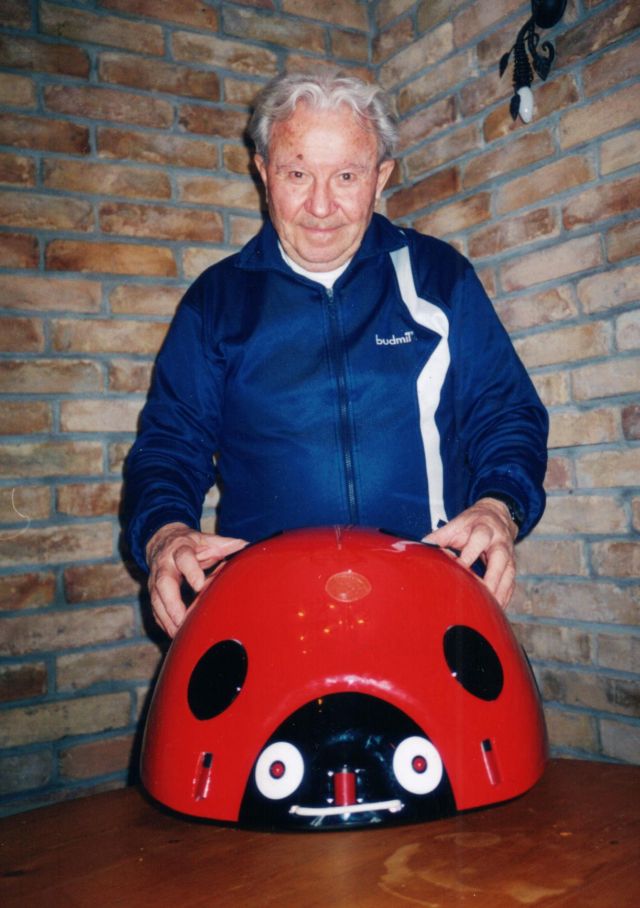
Dr Muszka Dániel (1930-) . Daniel with his Elektronikus Katicabogár (Electronic Ladybird)
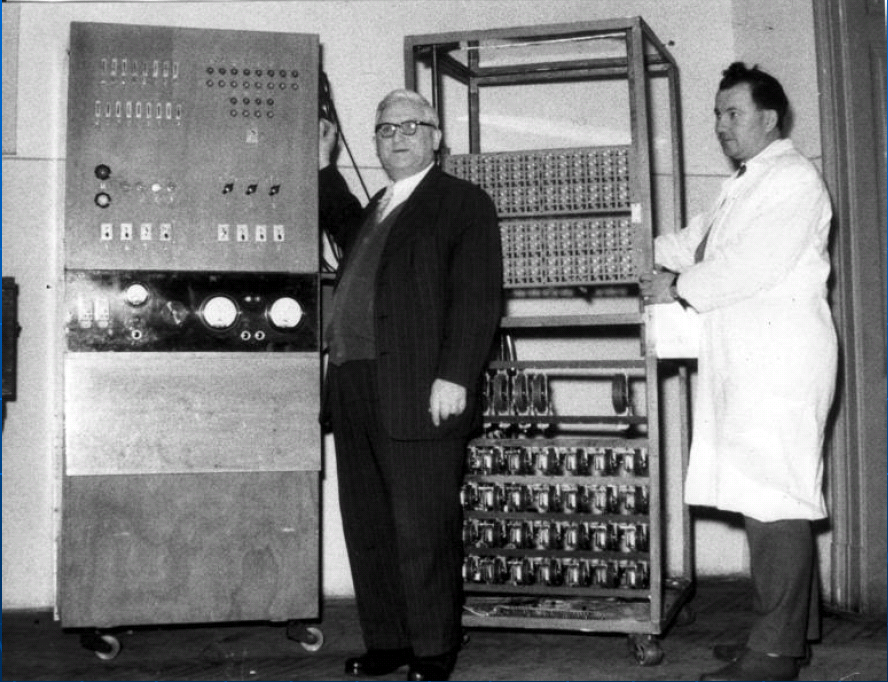
A young Daniel (on the right)l with László Kalmár (1905-1971, IEEE Computer Pioneer 1997). University of Szeged.
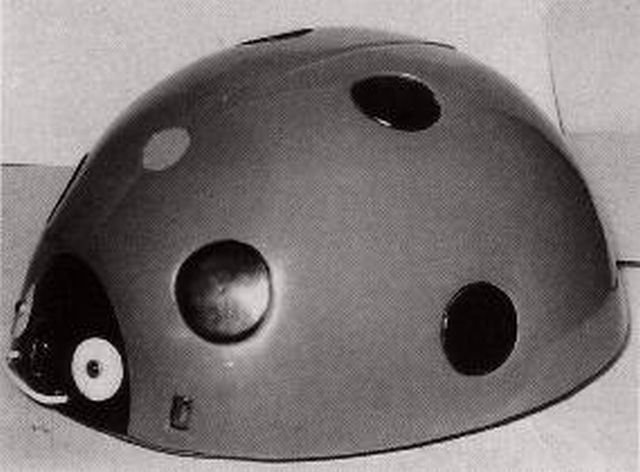
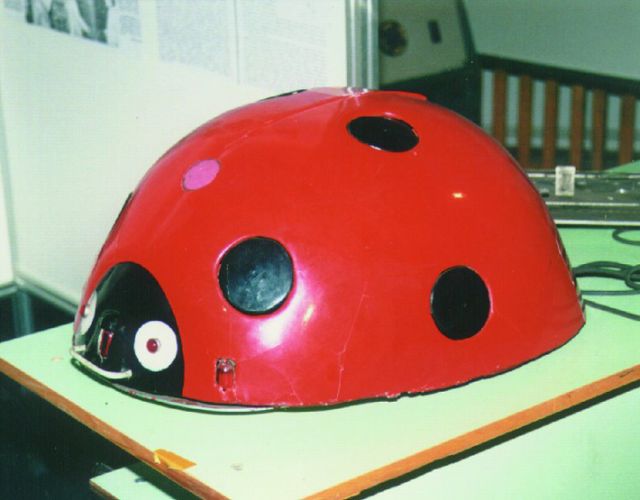

The above picture shows the first version of Szegedi Katicabogár. The wheel on the left is powered for steering and appears to utilize the fixed angle method rather than a continuous rotary motion similar to Grey Walter's tortoises.

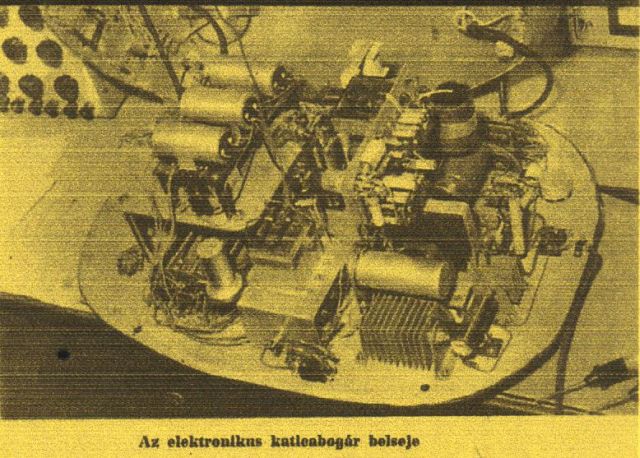
The images in yellow above are from an early paper. The pdf is here Szeged Katicabogar Muszka Daniel. When I complete the English translation I will publish it here in this blog post.

-x640.jpg)
-x640.jpg)
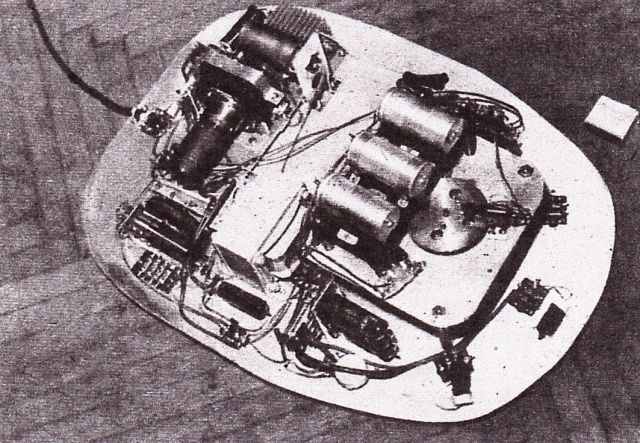
Cybernetic Machines – T Nemes, translated by W A Ainsworth, Budapest
1969, p172
The "Coccinella", constructed at the Institute of Pedagogy and Psychology of Szeged University, Hungary, is a 'machina docilis' of the appearance of a ladybird, of 60 cm length and 25 cm height. Two of its photoelectric cells are connected like those of the Philips dog, so that if the machine has once "caught glimpse" of a lamp, it interrupts its search and heads towards the lamp till a third photoelectric cell switches the drive motor off when the light source is in the axis of the machine. On tapping or pressing the spots of the ladybird, the machine stops and emits a soft murmuring sound. This sound ceases when the back of the machine is stroked, and the machine begins to move again. The sound of a whistle of a certain pitch makes some lamps mounted on the machine light up. Several such conditioned reflexes can be stored, because the circuit which reproduces the development of the conditioned reflex is exceedingly simple (one tube only!). There are only 7 vacuum tubes, 3 crystal diodes, 3 photoelectric cells, 1 microphone and 2 motors in the machine: Instead of a battery of its own (the early models carried small batteries) this machine trails a flex connected to the mains.
Note: Nemes above says the Ladybird searches for light, where in actual fact the ladybird only moves if it sees a light.
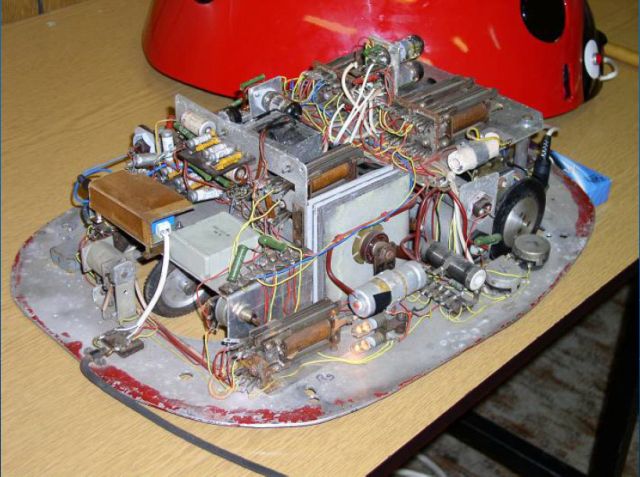
The Szegedi Katicabogár as it was in 2009. The power supply has been upgraded. This is the second version which had major changes, particularly around the steering. What was previously the steering wheel is now just a castor wheel. The side wheels are independent and operate off their own motors (early windscreen wiper motors).

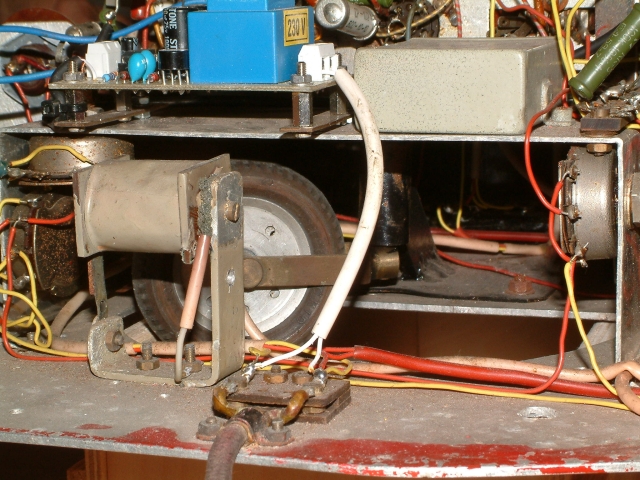
Detailed photograph showing the castor wheel. What looks like a simple relay in the foreground is actually a buzzer. This buzzer sounds when Katicabogár is stopped when one of the black dots is pressed. The photo below shows the inside of the shell, and one can see what looks like a red 'fin'. This is spring loaded and wired and protrudes from the top of the shell. When the shell is "petted" (actually pushing the long "fin" down, the ladybird starts up again, re-assured that it is now safe to continue. If there was any conditioned reflex action learned, it is now forgotten.

The cylinder to the left of the black contact dot is a modern replacement for the original microphone. Further to the left of the photo one can see two of the three photo-electric cells used . (They are coloured red as original)
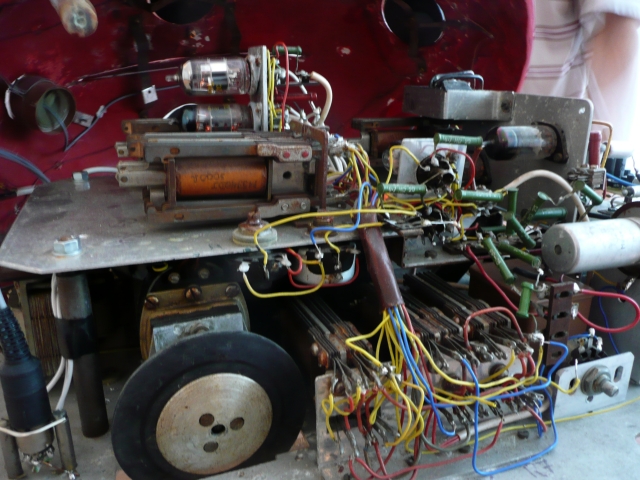
No trickery here. The original valves (vacuum tubes) have their heaters glowing, ready for action. Original relays still work.
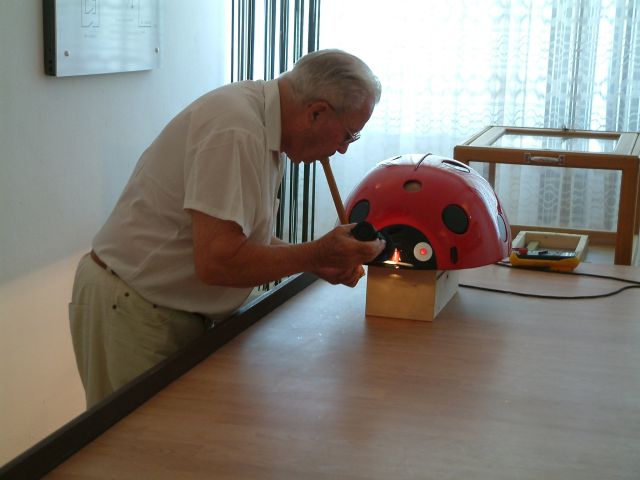
Daniel Muszka training Katicabogár for conditioned reflex action. He shone the torch into the central photo-electric cell and blew the flute at the same time. This was repeated multiple times until eventually the Katicabogár move forward just by blowing the flute. Regular blowing of the flute would continue to re-inforce the conditioned reflex. If the flute was not played again, the model would eventually forget the reflex and would either have to be taught again, or just follow a light source only.

The above pic is a clip from a TV news clip whereby the local TV station had invited Daniel in to demonstrate the Katicabogár. Everything was ready to go until they switched the studio lights on which totally confused the machine. They quickly relocated the demonstration to the nearby floor, but Daniel was only formally dressed from the waist up, wearing sandals, etc. Clever lighting ensured a successful demo without highlighting Daniel's casual garb from the waist down.

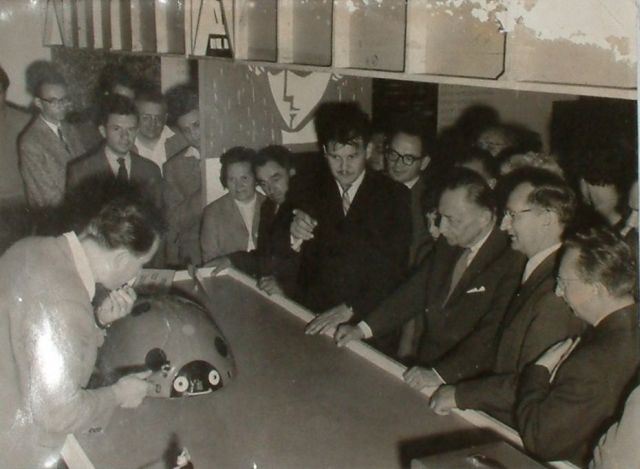
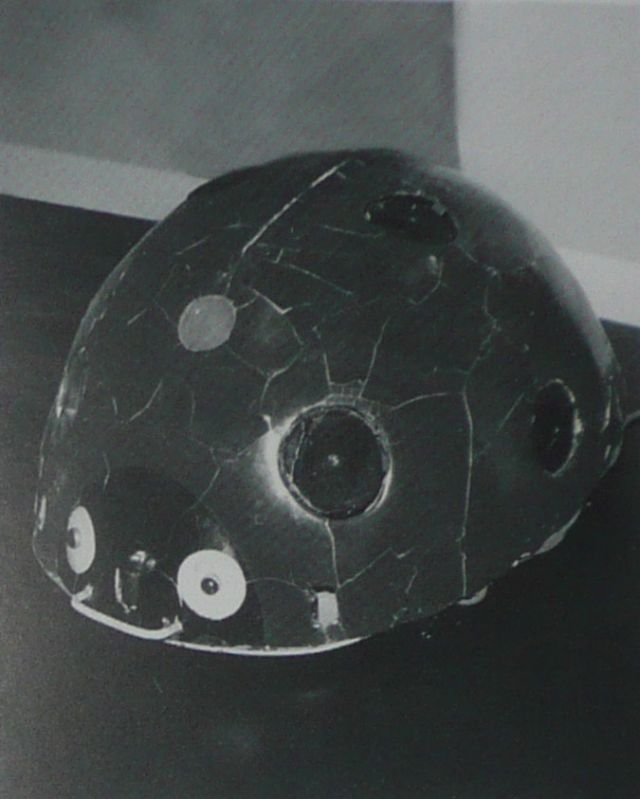
The first version of the shell was made out of papier mache. Over time becoming brittle and showing signs of cracking. A modern reproduction of Katicabogár was produced for the Budapest Museum. A second mould of the shell was taken and now adorns the original Katicabogár in Szeged.

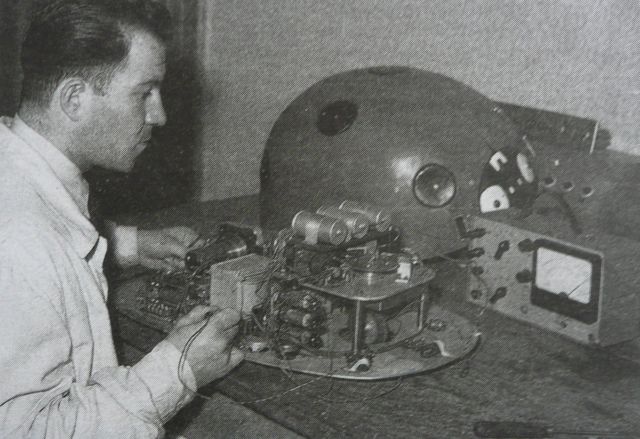
Rough machine translation of the description found here http://www.inf.u-szeged.hu/~csendes/katica/honlap/mukodes.htm
The Ladybird models both the unconditional and conditional reflex models. It is able to respond to a sound, to light, and to touch. If the light and sound stimuli are at the same time it learns that it should respond to a sound in the same manner as earlier it did to the light, that is, a conditional reflex takes shape in him. This learned reflex may be forgotten if the stimuli are not presented again.
After the Ladybird is switched on the eyes of the beetle do not respond to dim light. If a light-source (ie. torch) is shone into his eyes the animal moves in the direction of the light and if the torch is moved the Ladybird will follow it. If the light is turned off or is too far away, it stops then, his eyes is insensitive again to dim light. If a flute is played, the eyes flash, indicating that he perceives the sound. If the light and the sound stimuli are coincident then they are associated then the beetle moves when it hears the sound only, and moves in a straight line.
Under the dots of the beetle are switches. If we press one, or if he touches an object then the result is he closes his eyes (the same as if the light was turned off), expresses his disapproval with a growl, forgets the learned reflex and in this state neither reacts to light nor to sound. We can comfort it in that situation by caressing button on his back. At this time the growl stops, his eyes light up, and he becomes reactive again.
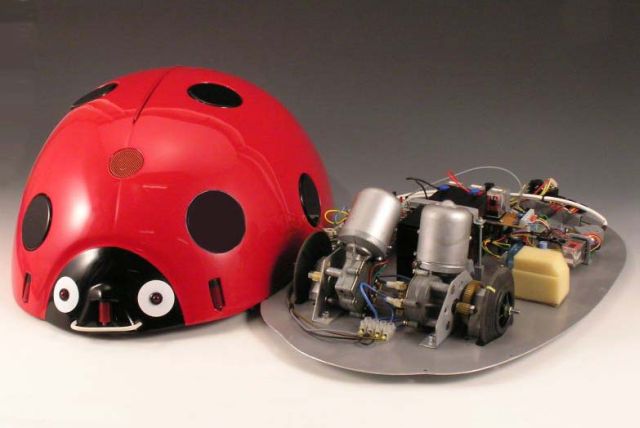
The above replica was made in 2004 for the Budapest museum , I believe. It uses modern electronics, modern windscreen wiper motors. The shell made for this version was duplicated and the copy is now the shell for the original one in Szeged.
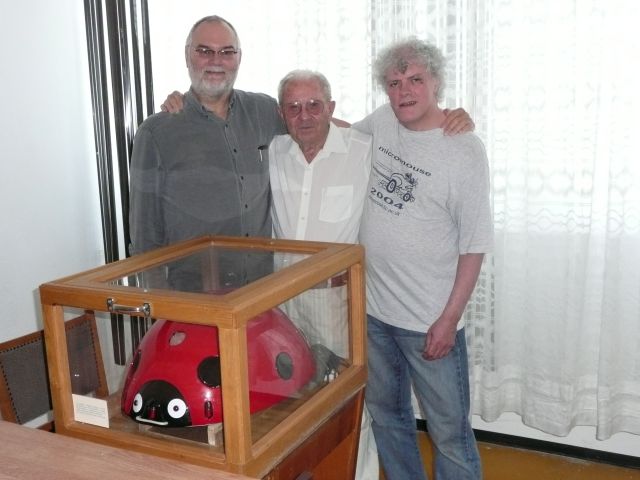
June 2009 – Reuben Hoggett (the author), Daniel Muszka, and David Buckley pose with the Szegedi Katicabogár. Photo taken by Mike Bohus.
Trip Notes June 2009
"We need to keep in mind the politics of both Hungary and Austria at this time. Post WW2 , Hungary fell under the influence of the Soviet Union officially by 1949, with the Soviets crushing the Hungarian revolution later in 1956. Stalinism was experienced during the end of fourties and the beginning of fifties in Hungary, the political police arrested not only the ruling members of the former regime, but also the most distinguished members of the intelligencia. They then constructed legal cases against them. The fortunate ones were sentenced to prison for a short or long time. Unfortunately, some excellent specialists were sentenced to death. In 1955, the Austrian State Treaty and ensuing declaration of neutrality established Austria as a demilitarized and neutral country.
Daniel Muszka built his first lady-bug starting 1956 and finished in 1957.
Its interesting to note that the Zemanek models (Vienna, Austria) were not "scanners" i.e. photo-electric cells mounted on a rotating front steering wheel, but utilized a fixed angle reverse turn mechanism.
The first Hungarian model by Angyan was a full rotary scanner. Daniel was requested by the newly formed Cybernetics Laboratory headed by Laszlo Kalmar to build a conditioned reflex model. He requested information from Angyan but is was not forthcoming. His brief was to build a model that encompassed Tropism, conditioned reflex, and defensive reflex. Although the first model had a partially rotating front steering wheel (spring return as per Vienna model), the photo-electric cells (PEC) were not mounted with it, but he deployed three fixed PEC's mounted in the shell. Daniel did say he had difficulty getting this first version working properly, and subsequently moved to steering powered by the rear drive wheels. The left and right PEC's were used for steering, and the front PEC used for the driving forward. Daniel had an excellent understanding of electronics, and was building radio sets early in life. He used this knowledge to build the lady-bug. I believe the second version was built to his own design from a descriptions mentioned above, for he had nothing else!
Grey Walter himself commented in his book "The Living Brain" that there were difficulties in getting the mechanics of his models to work properly.

Bohus Mihály (1949-) . Above is a picture of Mike (as Englsh-speaking people would call him) going through a demonstration of phototropics. The daily running of the Museum (www.infmuz.hu) is largely down to Mike these days, whose speciality is Telecommunications.
The Computer Museum is well worth the visit. My own IT career started in the early 1970's and I had fun playing with the old IBM 360 / 370 series mainframe computers and peripherals. Quite a flashback for me. A visit is by arrangement only so please contact Mike in the first instance.
Informatika Történeti Múzeum Alapítvány Gy?jteménye
(Collection of Foundation of Informatic History Museum),
Address: H-6728 Szeged, Budapesti út 5.
(Building of earlier soviet military camp,
NW of Szeged, near SZEGED sign on E75/5 road to Budapest)
* Update: 29 Nov 2010 – Mike Bohus writes to me:
In 2010 June 29 Daniel was 80.
New film: http://www.infmuz.hu/Filmek.htm
A szegedi katicabogár (WMV 112 MB) [in Hungarian]
(Bemutatja az alkotó, Dr. Muszka Dániel, Szeged, TiszapART TV, 2010)
(Bohus Vera is my daughter.)
Best Mike (Mihály)
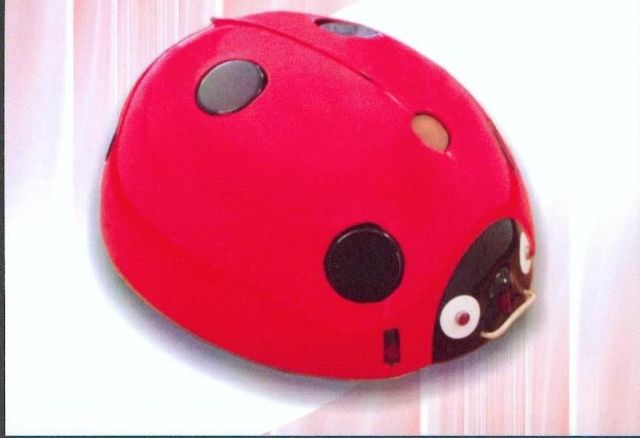
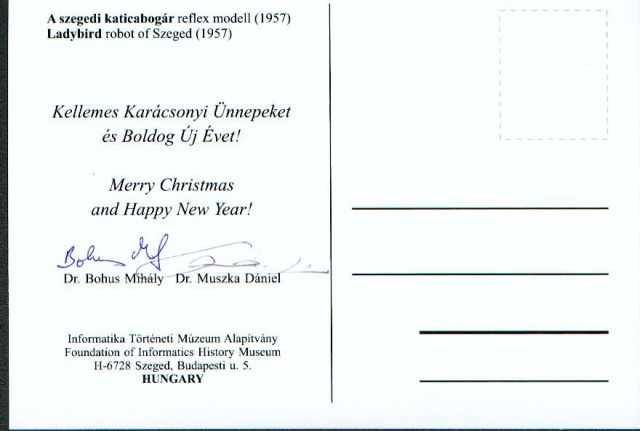
A Time of the future
A head of its Time>